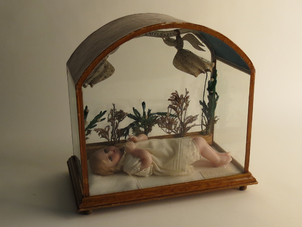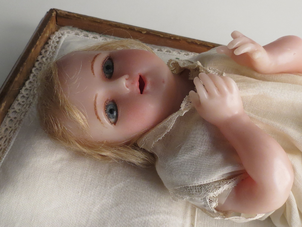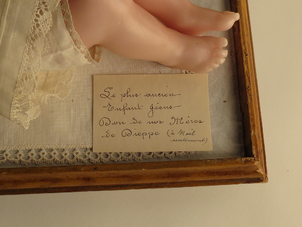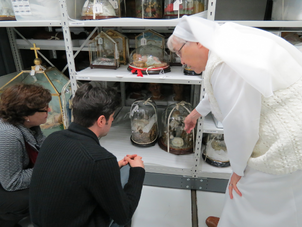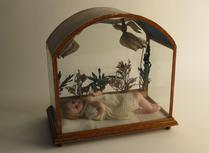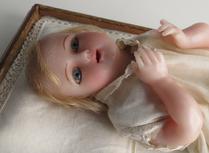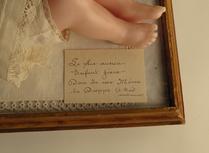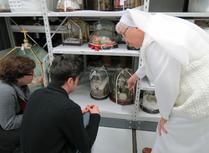BABY JESUS WAX FIGURINES : A TRADITION OF THE AUGUSTINIAN SISTERS SINCE 1639
Among the Augustinian Sisters, the art of making wax figurines of baby Jesus was handed down from generation to generation from the sisters’ arrival in New France in1639 onward.
The first step in the technique involved melting bees’ wax in large pots before colouring it. Then the wax was poured into moulds made of plaster, a technique known as “lost-wax casting”. After hardening and being removed from the mould, each figurine is polished. Then glass eyes are added and real hair, that has been curled by wrapping it around a knitting needle, is affixed, one strand at a time. For the sisters, this craft is both a hobby and a spiritual activity that is accompanied by appropriate readings.
In the past, in addition to baby Jesus figurines, the Augustinian Sisters made flowers, fruit, vines and olive branches out of wax. These objects were either made by special order, offered as gifts (to doctors or patients at the hospital, for example) or sold. It is mostly parishes and other religious communities that have called upon this centuries-old craft of the Augustinian Sisters.
In the first three photos:
Wax figure of baby Jesus, under glass, with a handwritten note that reads: “The oldest baby Jesus, a gift from our mothers from Dieppe.” Gift from the Augustinian Sisters of l’Hôtel-Dieu de Dieppe in France around 1639, sent by ship for the first Christmas in New France. It survived the fire at l’Hôtel-Dieu de Québec in June of 1755.
Collection: Hôtel-Dieu de Québec monastery
---Reference: Patrimoine immatériel religieux du Québec


